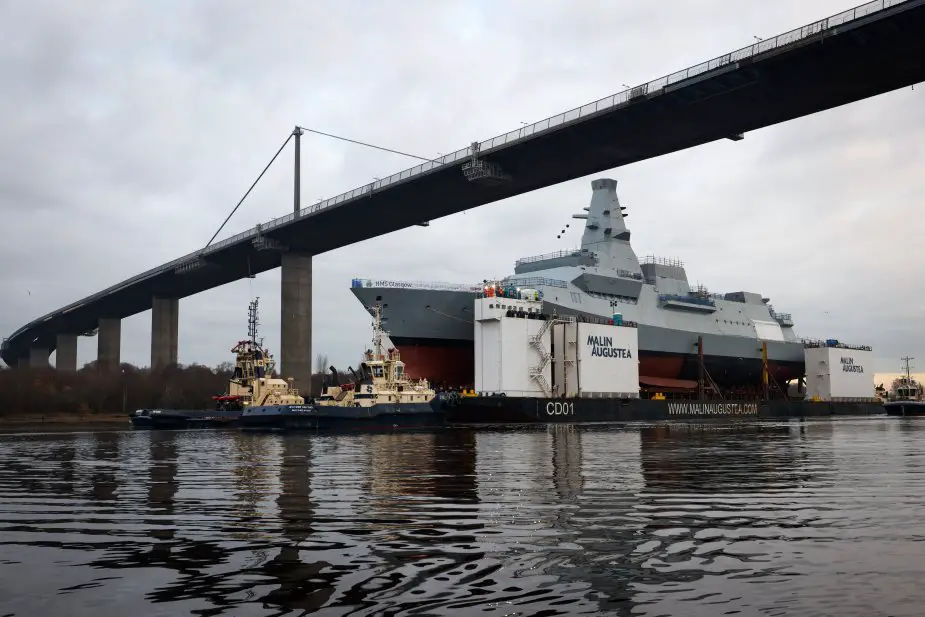Breaking news
UK: Type 26 frigate HMS Glasgow transits the River Clyde for the first time.
According to a tweet published by BAE Systems on December 1, 2022, the Type 26 frigate HMS Glasgow transited the River Clyde for the first time. The first of the Type 26 frigates will ultimately be delivered to Scotstoun after completing the first stage of her construction at Govan shipyard. She passed the Titan Crane and Erskine Bridge.
Follow Navy Recognition on Google News at this link
 Type 26 frigate HMS Glasgow. (Picture source: BAE Systems)
Type 26 frigate HMS Glasgow. (Picture source: BAE Systems)
HMS Glasgow is the first Type 26 frigate to be built for the United Kingdom's Royal Navy. The Type 26 class will partially replace the navy's thirteen Type 23 frigates and will be a multi-mission warship designed to support anti-submarine warfare, air defence and general purpose operations.
The ship is being assembled on the River Clyde in Glasgow. The first steel was cut for Glasgow in July 2017 with the ship expected to be delivered in 2024 and operational in about 2026.
The program, known as the Global Combat Ship, was launched by the UK Ministry of Defence to partially replace the navy's thirteen Type 23 frigates, and for export.
The program began in 1998, under what was then known as the Future Surface Combatant (FSC). However, by March 2010, this procurement program had evolved to become the Global Combat Ship, following the announcement of a four-year, £127 million design contract being awarded to BAE Systems Maritime – Naval Ships.
Open sources suggest a displacement of 6,900 tonnes, a length of 149.9 m (492 ft) a beam of 20.8 m (68 ft), and a top speed in excess of 26 knots (48 km/h). The Global Combat Ship will have a core crew of 157 with room for a total of 208.
The Global Combat Ship is designed for up to 60 days' endurance and a range of approximately 7,000 nautical miles (13,000 km). Located at the stern are facilities allowing for the deployment of rigid-hulled inflatable boats, unmanned surface vehicles or a towed array sonar.
The frigate be equipped with the Type 997 Artisan 3D search radar and Sea Ceptor (CAMM) air-defence missiles launched via 48 vertical launching system (VLS) canisters. Additionally, 24 Mark 41 "strike-length VLS" cells are positioned forward of the bridge.

























